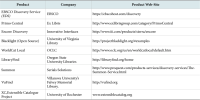ISSN : 2287-9099
Vol.4 No.3

Abstract
There has been a growing interest and enthusiasm for the application of virtual worlds in learning and training. This research proposes a design framework of a virtual world-based learning environment that integrates two unique features of the virtual world technology, immersion and interactivity, with an instructional strategy that promotes self-regulatory learning. We demonstrate the usefulness and assess the effectiveness of our design in the context of information security learning. In particular, the information security learning module implemented in Second Life was incorporated into an Introduction to Information Security course. Data from pre- and post-learning surveys were used to evaluate the effectiveness of the learning module. Overall, the results strongly suggest that the virtual world-based learning environment enhances information security learning, thus supporting the effectiveness of the proposed design framework. Additional results suggest that learner traits have an important influence on learning outcomes through perceived enjoyment. The study offers useful design and implementation guidelines for organizations and universities to develop a virtual world-based learning environment. It also represents an initial step towards the design and explanation theories of virtual world-based learning environments.


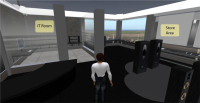

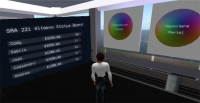
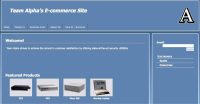

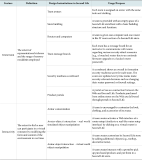







Abstract
Smartphones have become one of the most prevalent information devices in the current information environment. Although many people use smartphones for communication and information acquisition, these two functions are closely related and cannot be separated. However, many studies have focused on identifying each function of a smartphone independently. There are few studies that investigate the relationships between communication and information acquisition functions on smartphones. This research empirically analyzed and identified the relationships between these two functions of smartphones by conducting a survey. The results of the analysis showed that the activities for information acquisition make differences in communication on a smartphone. People who want to acquire more information tend to use a smartphone for communication purposes. Besides, communication activities on a smartphone also affect the acquisition of information. In addition, communication activities on a smartphone also affect the establishment of interpersonal relationships that lead to the acquisition of more information. From these results, it is identified that communication activities and information acquisition are interrelated when satisfying the information needs of smartphone users. Especially, communication activities on a smartphone positively affect people’s information activities and enhance information acquisition.


















Abstract
Introduction. Inadequate methods for acquiring user education could affect the level of library user education possessed by postgraduate students, and ultimately influence the purposes of their usage of e-resources provided in their university libraries. Despite the global acceptance that e-resources are contributing to postgraduate student’s research work, however, it has been documented that there is low use of e-resources in university libraries in Nigeria among postgraduate students. This drift could have negative consequences on their overall development. Therefore, this study determined how influential library user education is on the use of e-resources by postgraduate students in Nigerian university libraries. Methods. A survey research design and multi-stage sampling technique was adopted to select 2,726 from 54,578 postgraduate students from four faculties in 16 federal conventional universities in Nigeria. The data set was collected using a questionnaire and an interview schedule for e-resources librarians/system librarians and was analysed using percentage and Pearson’s product moment correlation. Results. The majority of the students were at the Master’s level (57.5%). The gender shows a ratio of 59.0% male and 41.0% female. Most Nigerian students enrol for postgraduate programmes in their thirties ‘30-39’ years. The use of e-resources by the postgraduates was low (weighted average of 2.45). The relationship between level of library user education and postgraduate students’ use of e-resources was positive, slightly strong, and significant (r = 318; df = 2284; p< .05). Conclusion. User education has positively inclined postgraduate students to the use of e-resources in their libraries. Therefore, libraries should employ all methods for acquiring user education for postgraduate students.



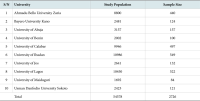
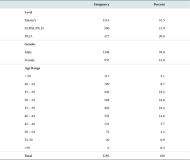





Abstract
Purpose The purpose of the study is to identify the need of a mobile based library information and service delivery system in developing countries, identify the services that are possible to provide with the help of mobile phones and their applications, design a mobile based library information and service delivery system, and identify major challenges regarding mobile based library information and service delivery systems. Design/ Methodology/ Approach The research is exploratory in nature. This paper is based on a review of literature, survey information, and on the author’s own viewpoints. A comprehensive search of scientific literature has been done along with a survey for validating the necessity of designing mobile based library information and service delivery systems. Responses to closed-ended questions in particular on 7-point Likert scales were analyzed using the descriptive analysis techniques of SPSS 20.0 and responses to other closed-ended questions were analyzed using general statistics. Findings The research indicates that users of academic libraries, especially students and faculty members, have a positive notion regarding designing and implementing a mobile based library information and service delivery system. It also reveals user opinions regarding the possible problems associated with the design and implementation of a mobile based library information and service delivery system. Originality The paper explores mobile based library information and service delivery systems for better and faster service provision to its potential users.



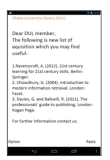



Abstract
Purpose. The purpose of this paper is to analyze and evaluate discovery layer search tools for retrieval of legal information in Indian law libraries. This paper covers current practices in legal information retrieval with special reference to Indian academic law libraries, and analyses its importance in the domain of law. Design/Methodology/Approach. A web survey and observational study method are used to collect the data. Data related to the discovery tools were collected using email and further discussion held with the discovery layer/ tool /product developers and their representatives. Findings. Results show that most of the Indian law libraries are subscribing to bundles of legal information resources such as Hein Online, JSTOR, LexisNexis Academic, Manupatra, Westlaw India, SCC web, AIR Online (CDROM), and so on. International legal and academic resources are compatible with discovery tools because they support various standards related to online publishing and dissemination such as OAI/PMH, Open URL, MARC21, and Z39.50, but Indian legal resources such as Manupatra, Air, and SCC are not compatible with the discovery layers. The central index is one of the important components in a discovery search interface, and discovery layer services/tools could be useful for Indian law libraries also if they can include multiple legal and academic resources in their central index. But present practices and observations reveal that discovery layers are not providing facility to cover legal information resources. Therefore, in the present form, discovery tools are not very useful; they are an incomplete and half solution for Indian libraries because all available Indian legal resources available in the law libraries are not covered. Originality/Value. Very limited research or published literature is available in the area of discovery layers and their compatibility with legal information resources.

